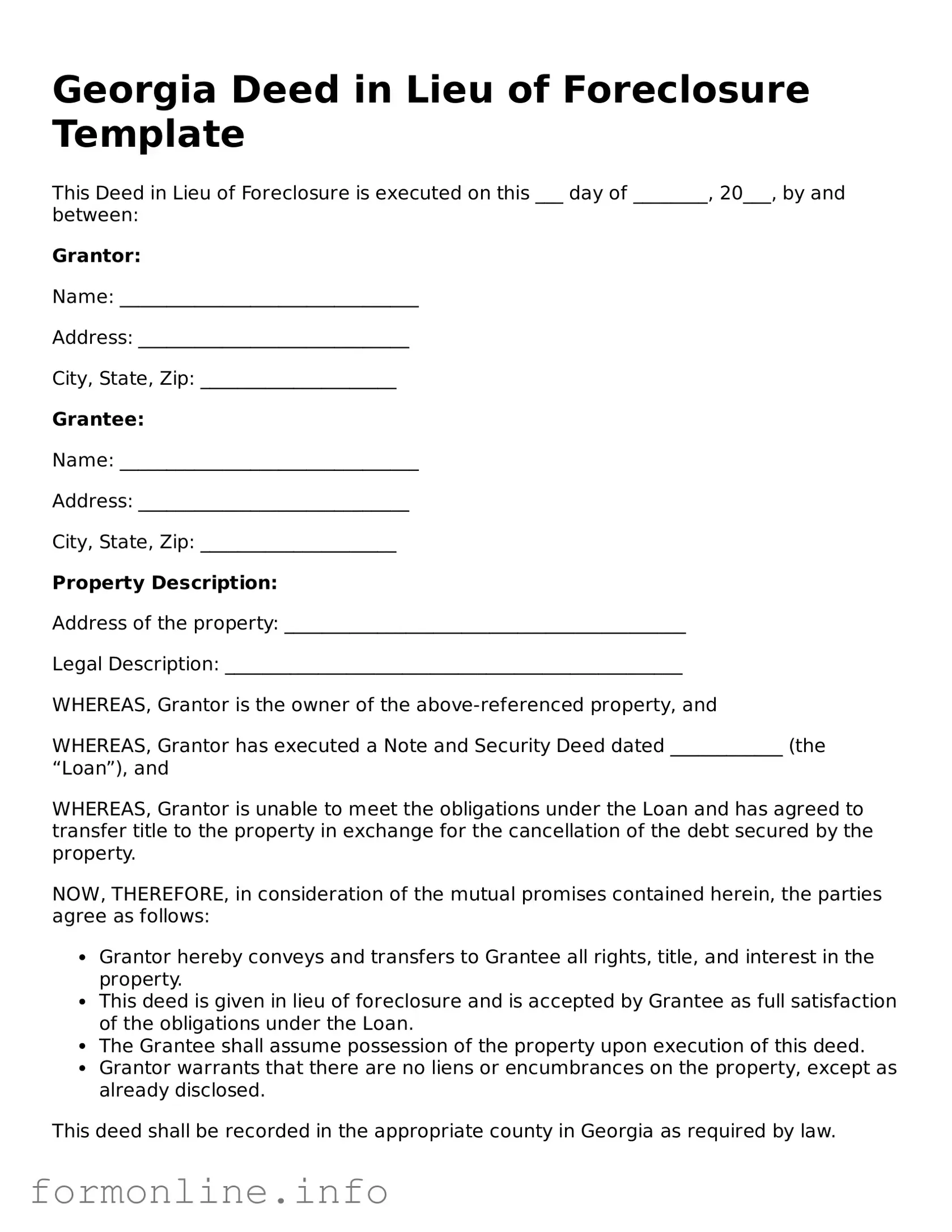Georgia Deed in Lieu of Foreclosure Template
This Deed in Lieu of Foreclosure is executed on this ___ day of ________, 20___, by and between:
Grantor:
Name: ________________________________
Address: _____________________________
City, State, Zip: _____________________
Grantee:
Name: ________________________________
Address: _____________________________
City, State, Zip: _____________________
Property Description:
Address of the property: ___________________________________________
Legal Description: _________________________________________________
WHEREAS, Grantor is the owner of the above-referenced property, and
WHEREAS, Grantor has executed a Note and Security Deed dated ____________ (the “Loan”), and
WHEREAS, Grantor is unable to meet the obligations under the Loan and has agreed to transfer title to the property in exchange for the cancellation of the debt secured by the property.
NOW, THEREFORE, in consideration of the mutual promises contained herein, the parties agree as follows:
- Grantor hereby conveys and transfers to Grantee all rights, title, and interest in the property.
- This deed is given in lieu of foreclosure and is accepted by Grantee as full satisfaction of the obligations under the Loan.
- The Grantee shall assume possession of the property upon execution of this deed.
- Grantor warrants that there are no liens or encumbrances on the property, except as already disclosed.
This deed shall be recorded in the appropriate county in Georgia as required by law.
IN WITNESS WHEREOF, Grantor has executed this Deed in Lieu of Foreclosure as of the date first above written.
Grantor Signature: ___________________________
Date: ______________________
Grantee Signature: __________________________
Date: ______________________
Witnessed by:
______________________ (Witness Signature) Date: ___________
______________________ (Witness Printed Name)
Notarization:
State of Georgia, County of _______________
Subscribed and sworn to before me this ____ day of __________, 20___.
__________________________ (Notary Public)
My Commission Expires: ___________
